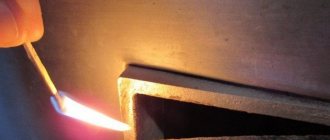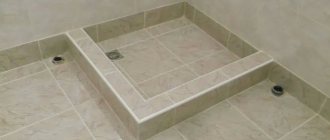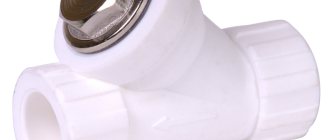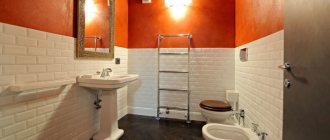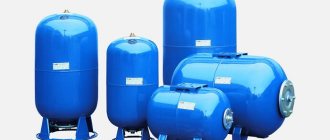What is grout used for?
First of all, such mixtures affect the appearance of the coating. Tile adhesive is characterized by a white or gray color, which often disrupts the overall picture of the interior.
To change the tone of tile adhesive, grout solutions are used. They contain a pigment that allows you to improve the external characteristics of the cladding: get a more seamless coating or, conversely, highlight the tile.
Additionally, grout mixtures help prevent the destruction of the subfloor.
When laying tiles in a toilet or bathroom in areas near plumbing fixtures, the likelihood of surface contact with water or hot steam increases. As a result, moisture penetrates under the cladding and contributes to the loss of properties of the tile adhesive (if a hygroscopic composition was used).
If there is a protective layer in the form of grout, the service life of the cladding increases.
In addition, the treatment of tile joints helps protect these areas from rapid contamination. The grout is characterized by a fine-grained structure. This allows for a smoother surface between the tiles. As a result, contaminants are less actively retained on the coating
.
Another reason to use grout is its ability to strengthen the siding. Most modern compositions of this group are characterized by increased strength, sufficient elasticity, and can withstand changes in temperature and moisture. This allows you to further strengthen the coating.
The properties of grouting compounds are also noted, such as the ability to prevent the formation of fungus on the surface. Thanks to this, it becomes possible to use tile coverings in rooms with high humidity. Grout mixtures of this group do not allow fungi to develop, which is due to the structure of the materials and their composition.
Such mixtures are used to improve the properties of the rough base and cladding. Tile adhesive is characterized by moderate strength, but does not withstand constant exposure to negative factors. For this reason, the base begins to collapse faster. Cracks appear in the space between the tiles, the coating is deformed with the constant expansion of the base material.
The best manufacturers
Popular grout manufacturers produce mixtures of all types and colors; there is no point in listing the assortment. And considering that fugues from industry leaders are of equally high quality, it is difficult to compile a rating. It’s better to talk about the nuances of the product.
Ceresit
Under the Ceresit brand, a line of building mixtures is supplied by Henkel. A special component of the product is the antifungal additive MicroProtect, on the basis of which the biocide concentrate CT 99 is also produced. The company also advertises the Aquastatic effect, which any Ceresit water-repellent mastic has. But this is simply the presence of latex.
MAPEI
The products of this Italian company also include anti-mold and waterproof materials of their own design. A certain organic additive BioBlock fights fungi by preventing the development of spores. Water flows off MAPEI grout in drops thanks to Drop Effect technology.
LITOKOL
LITOKOL is also from Italy. It has not been caught enriching the product with exclusive additives, but, among other things, it produces the popular latex additive IDROSTUK for mixing cement mixtures.
ATLAS
The Polish concern ATLAS announces three innovations in its fugues. COLOR PROTECT technology makes the color stable, protects against fading in the sun, and prevents contamination. Hydrophobicity is provided by EFEKT PERLENIA with certain special molecules. Well, where would we be without protection against fungus? MYKO BARIERA is responsible for this.
Is it possible to do without grout?
If the tiles will be laid, for example, on a wall, the likelihood of contact with water and moisture is small, and the coating is not planned to be used for a long period, then in such conditions it is permissible to refuse to grout joints.
When the cladding is not affected by negative external factors (temperature limits, hot steam, water), then the process of destruction of the seams and the rough base will develop much more slowly.
In rooms where there is a significant level of humidity or the surface is subject to intense load (for example, in high-traffic areas), the coating cannot be used without additional protection. If you plan to lay the cladding for a long period, you should close the seam.
If you plan to lay the cladding for a long period, you should close the seam, and grouting the seams in this case is a mandatory step when performing the work.
What to pay attention to
In order to make the right choice in the store and not make a mistake, you need to adhere to the basic rules when purchasing:
- Store samples are usually slightly lighter than the actual grout color;
- It is better to take tiles with you so as not to make a mistake in choosing;
- If you choose a light shade for the tiles, you will get a merging effect. And if it’s dark, then a geometric pattern;
- If you cannot purchase a suitable color, then take a universal white shade;
- Make it a rule to combine 3 colors - there should be no more than 3 in the room.
- At the same time, they often choose a shade specifically for the interior or furniture, and not for the tile itself.
How long does it take for tile grout to dry?
There is no definite answer to this question, because it depends on the composition of the mixture, its properties, and the presence of errors during mixing. If you are wondering how long it takes grout to dry, you need to consider that cement is a material that sets more slowly than others. This means that most compositions based on it will maintain viscosity for a long time.
This applies to cement and cement-sand mixtures.
Epoxy and epoxy-cement compositions harden somewhat faster. Given the difference in drying speed, you can only rely on average values. So, in most cases, the mixture sets within a day, but the coating can be used only after 5-7 days. Then the grout will dry not only on the surface, but also inside the layer.
Much depends on the intended purpose of the materials. So, if you plan to drill tiles in a room where there is a high probability of direct contact with hot steam or water, then it is better to start installation work later. If you wait only 3 days from the moment of applying the mixture, there is a high probability of faster destruction of the coating, since the grout will not have time to become durable during this time.
In addition, the drying time depends on the thickness of the layer. If, when applying glue, the space between the tiles was filled insufficiently, unevenness in the seams is eliminated at the grouting stage. In this case, sometimes the layer of material is significant, which leads to an increase in the drying time of the composition. If in this case cement grout was used, then its maximum hardening can be expected 1.5-2 times longer.
What affects drying time?
Under different conditions, the same materials behave differently. To speed up the process of full setting, it is necessary to perform the installation correctly and change the environmental conditions. There are a number of factors that contribute to increasing the period during which the mixture gains strength:
- Material composition: different types of grout set at different speeds, which is due to the difference in the combination of components, as well as the properties of each substance.
- Non-compliance with mixing technology: when changing the ratio of materials, using raw mixtures, increasing/decreasing the initial amount of water, poor-quality mixing of large fractions of the composition, a loss of grout properties is observed (it does not gain strength, absorbs moisture).
- Cement mixtures must be cured for a certain period before work begins.
- The grout is applied to slightly moistened surfaces; if there is water left in the space between the tiles or the coating is too moistened, the mixture will take a long time to dry. In addition, its application under such conditions can lead to loss of properties and reduced adhesion to tile adhesive.
- Removal of excess grout should be done soon after application (10-40 minutes), which will allow the joint to be formed of sufficient thickness and speed up the drying of the material.
- Unsuitable environmental parameters: if the tiles are laid in the bathroom, the grout may be affected by water, hot steam, and temperature changes. In such conditions, the drying rate is reduced, so it is recommended to begin use no earlier than 7 days after application.
What to choose and is there any point in overpaying?
Since epoxy resin-based material has a high price, it is advisable to use it only in certain cases. For example, when lining swimming pools, areas near them, as well as other areas that will be exposed to water, it is better to use an epoxy compound. Other situations in which this grout cannot be avoided:
- design of kitchen apron and countertop;
- finishing places where mold constantly settles and seams are subject to high mechanical stress;
- creation of a “warm floor” coating;
- complex design work (composition, panels, tiles with a graphic pattern).
In simpler situations, when you need to lay tiles in the bathroom, kitchen, or finish a wall, you can use regular cement grout.
When can you start cleaning?
It is necessary to pay attention to the area where the tiles are located. Thus, it is recommended to clean the lining on the floor later, when the solution has set, since any deformation of the fresh material can lead to destruction of the mixture layer during operation. You can begin cleaning the wall covering 1-2 days after applying the grout.
However, in this case it is permissible to use a damp cloth. General cleaning, accompanied by a thorough washing of surfaces, even in this case is not recommended for a week.
Drying process
After the seams are filled with grout mixture, they need to dry.
- This will take 5 to 7 days.
- In the first day the putty sets. On the second day, the seams can be moistened with water to prevent cracking.
- On the third day, the putty dries completely, and on days 5-7 you can load the surface, that is, drill holes and wash the walls with cleaning agents and plenty of water.
High-quality work in compliance with all technological operations will protect the seams between the tiles from moisture and destruction.
Features of different types of grout
Main options:
- cement-sand – contains Portland cement and fine-grained sand, has moderate strength, the disadvantage is weak hygroscopicity;
- polymer mixtures (polyurethane, silicone) - characterized by increased elasticity, sufficient strength, do not absorb water and are often used in rooms with high humidity levels;
- epoxy grout - characterized by high strength, moisture resistance, contains resin and hardener, and is second only to the furan mixture in terms of reliability.
Shade selection
Typically, the choice of color for any building material is based on the personal preferences of the residents. For grout, white is considered a universal option. If necessary, it can be tinted with dry or liquid pigment. It is best to make the seams a little darker than the main tone. Epoxy grouts are often sold in already painted form, since colors are added at the production stage.
Kerakoll Fugalite Eco color range
Both epoxy and cement grout are considered high-quality finishing materials. The choice must be made based on specific requirements and conditions. In this case, the finished coating will last for many years and retain its visual appeal.
How to avoid mistakes and not affect the drying time?
To avoid thickening of the layer of material in the space between the tiles, you should use special tools for applying grout:
- Rubber spatula - used in most cases, but due to its small width it is not recommended to use it if you plan to perform a large amount of work. A spatula with these characteristics is suitable for applying different materials.
- Grater - used when finishing mosaics, since in this case the use of a spatula increases the installation time. A construction float is also suitable for filling joints in large areas, which allows you to speed up work.
- Syringe gun - designed for filling deep seams. This tool is often used for applying polyurethane and silicone mixtures; thanks to it, neat seam joints are obtained.
- A cone is an alternative to a pistol. This option is suitable for cases where it is necessary to protect porous base material.
What tools and materials will be needed
Epoxy grout is a very viscous and sticky material that is difficult to clean. Therefore, first of all, prepare rubber gloves that will protect your skin.
At the kneading stage, you will definitely need scales, and not simple ones, but high-precision electronic ones. Any mistake in dosage can ruin the epoxy compound and make it unusable, so do not measure components by eye and never add water to the solution.
To fill in the gaps, use what is called a grater: essentially a spatula made of a hard material (plastic, rubber, metal) with a handle. A low handle will be more convenient if you are used to working with one hand, while a higher handle will appeal to those who apply grout with two hands.
To form the seams, you will need a felt scourer, and to clean the tiles from epoxy deposits, you will need a foam rubber or cellulose scourer. Try different sponges to see which one is easier for you to work with.
Keep a bucket of water, soap, or laundry detergent on hand to clean your hands and tools when needed. Prepare several plastic containers where you will keep the finished mixture.
Tip: all tools as a set can be purchased from the grout manufacturer, for example, from the Litokol brand. But you may need something else: it’s better to prepare several types of sponges, for example.
Removing excess grout
It is recommended to remove excess mixture within the first 10-40 minutes after application. To do this, use a dampened and well-wrung out cloth. Traces of grout can be removed after 1 day. For this use:
- A foam glove soaked in vegetable oil is used to clean areas of the cladding that have been dirty, and the fatty components are cleaned with alcohol.
- Sandpaper - to eliminate unevenness in the space between the tiles.
- Citric acid - to remove stains.
- Soda, which is applied to damp tiles to remove white marks.
When it was not possible to remove the remaining grout on the 2nd day, it is recommended to begin intensive cleaning of the coating after the mixture has completely hardened.
Reviews
Consumers prefer epoxy grout due to its high stability, long service life and wide range of applications. In addition, many argue that this mixture is ideal for porous tiles, since it does not leave behind colored stains, which often form after a cement mixture. Epoxy is a godsend for designers who value a clear color selection and decorative effect.
Consumers note that the grout does not depend on temperature and easily tolerates changes from -20 to 100°C. The composition does not shrink, and after drying, cracks do not form on it, like with cement grout. They also emphasize the hypoallergenic nature of the material and its complete safety for the health of others.
Overview of methods
How to remove cloudy plaque?
Novice craftsmen are faced with the problem of how to clean off epoxy grout after completing installation work? For this purpose, special compounds have been developed that remove any type of darkening after the grout has dried.
For example, Litokol Gel is a concentrated substance that is pre-diluted in a container with water. For matte surfaces it does not need to be diluted in liquid. It is enough to apply a small amount of the composition on a foam sponge.
Foam is formed in the process. It must be quickly removed with a damp cloth. If you skip this moment, bubble marks will form on the surface of the tile. In the future, they are difficult to remove from the decorative plane.
Final cleaning involves using a soft cloth. Experts recommend choosing a cloth with a microfiber base. To give a glossy shine, use a special polish. However, it should be noted that after some time an oily film forms on the surface, which must be removed with detergents.
Note!
Mosaic for the bathroom: TOP-150 photos of new designs, as well as modern ideas for combining mosaic tiles
Do-it-yourself water heated floor under tiles step by step: installation instructions with photos and descriptions, installation and connection
Quartz vinyl floor tiles - what is it? Application features, advantages, disadvantages, choice, manufacturers, photos

